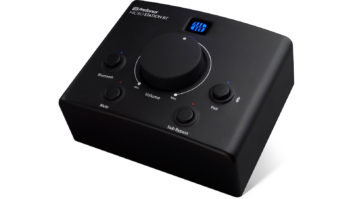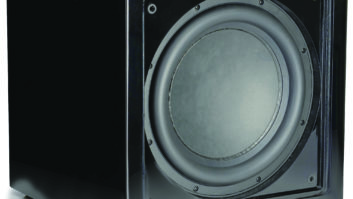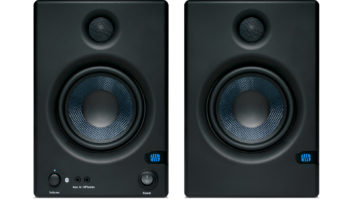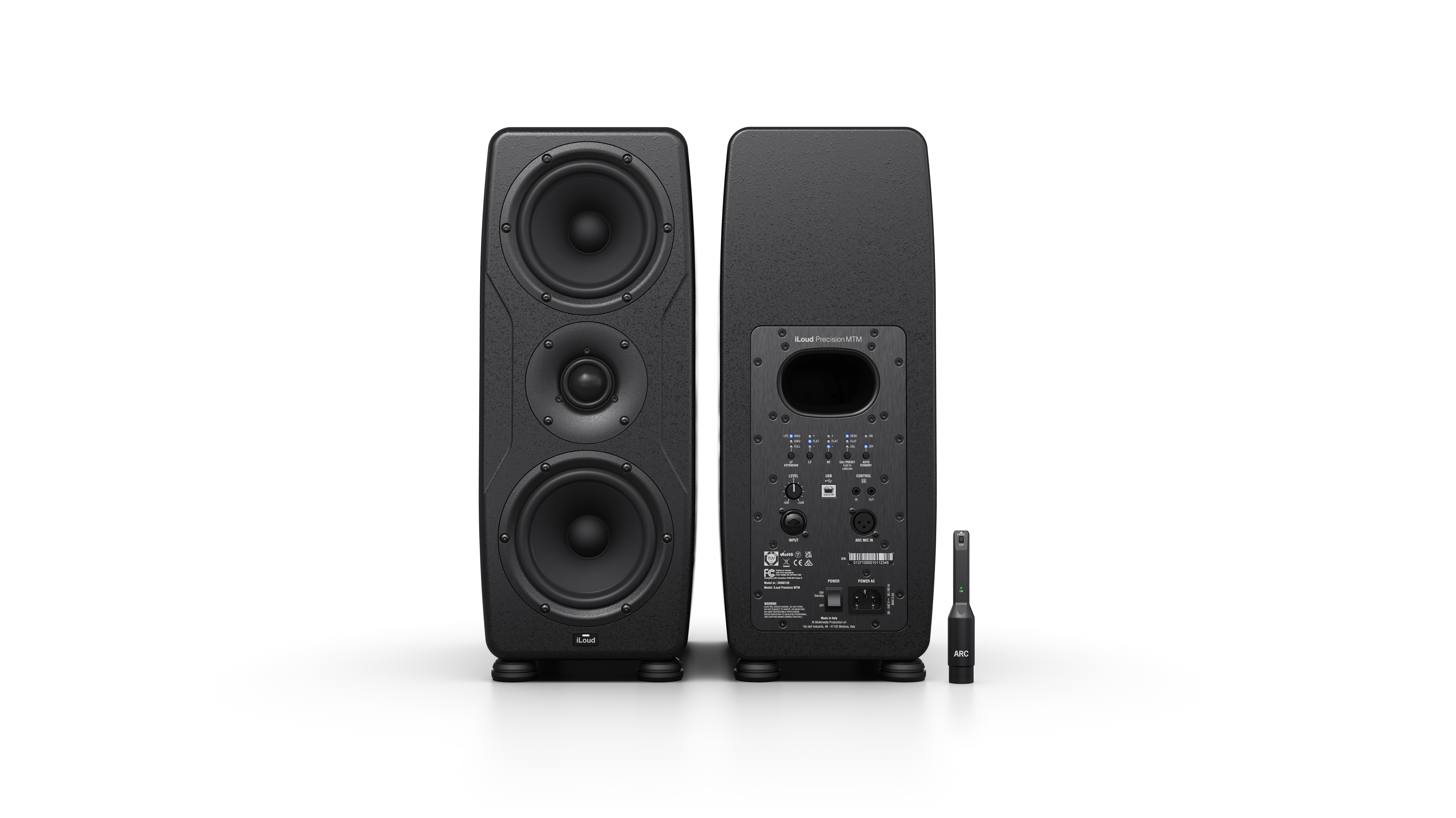As manufacturers of an already wide range of pro audio products, PreSonus has clearly been busy creating new monitors. Not long ago, I reviewed its coaxial time-aligned Sceptre S8 monitors and found them to have an unusually large and useful sweet spot. PreSonus’ new Eris E66 powered monitor employs an entirely different means of radiation and coverage; it is effective, indeed, and a part of an overall more desirable monitoring system.
The Eris line (including the smaller E44) employs a D’Appolito arrangement—or MTM, midwoofer/tweeter/midwoofer)—with a pair of identical 6.5-inch Kevlar fiber woofers sharing the same frequency range, placed less than one wavelength apart at their highest operational frequency, and cradles a 1.25-inch silk dome high-frequency driver in between. The woofers’ signals propagate together, acting like a single large driver, “partially containing the dispersion of the tweeter, minimizing phase displacement,” according to the company.
Inputs are, conveniently, a balanced XLR, TRS quarter-inch and unbalanced -10 dB RCA phono plug. Class A/B amplification provides 140 watts to the woofers and 90 watts to the tweeters. Controls include continuously variable mid and high frequency adjustment, a variable high pass filter and Acoustic Space control—a low-mid dip at flat/-2 dB or -4 dB.
I work in a mid-field standing control room environment; the sweet spot is about 5.5 feet away from my usual Blue Sky monitors and subwoofer. I placed the E66 pair on my Primacoustic IsoPad acoustic decouplers, defeated room EQ, disengaged my Sonarworks room correction system and got back to work. My immediate impression was that they sounded broken-in already, covering the large control room well with wide dispersion. The mids sounded a little unfamiliar, but I continued to work with little “new monitor shock.”
As time went on, the woofers loosened up just a little, as did my perceptions, and I began to get comfortable with the E66s. That wasn’t hard; the horizontal coverage was pleasantly wide with nice imaging that allowed for hearing the opposite monitor even if listening directly in front of the other monitor (a position some clients seem oddly comfortable in). Comparatively, the vertical radiation wasn’t as accurately forgiving, but adequate. Even though the top end seemed just right and the bottom end was well balanced, I found myself adding one click on the Mid control, taking out 2 dB of low-mids using the Acoustic Space control. To my recollection, the pots seemed firmer and more easily adjustable than I remembered with the Sceptre’s controls.
Closer inspection of the E66 pair revealed a molded, hard plastic enclosure with nice fit and form. They are not terribly extravagant in their materials, but are indeed well put together with good craftsmanship, an easy-to-clean surface and a nice overall appearance (and Kevlar woofers look cool). The boxes were not heavy due in part to their efficient A/B amplification. They run warm but not hot, and there was no audible chuffing of the front panel ports.
For this review, the E66s found particularly long-term usage in my studio; they stayed up as my mains for more than two months. I eventually found that the mids were sculpted a little bit, with a slight dip at good old 400 Hz, and even though I’m philosophically against any monitor color, the E66s’ “pretty curve” didn’t force me into bad decisions or re-mixes. Dynamically, they’re a little contained, but that didn’t seem to be a problem, either. And even though they’re detailed, they’re not super-detailed; “smooth” may be the best description, as the soft dome tweeter and even dispersion is not at all fatiguing or grating.
In all, Eris E66 monitors are quite pleasant and easy to like. They disperse beautifully horizontally, have ample I/O and controls, possess a useful frequency balance and have a nice look about them. Maybe they don’t have the excellent vertical dispersion of time-aligned square-horned Sceptres, or expensive cabinetry, or the punch, dynamics and frequency-flatness of premium monitors, but these monitors retail for a ridiculous bargain of $700 a pair, making them easy for me to recommend. Even compared to numerous other models in the crowded “under $1,000” marketplace, the E66 is a winner based on its long-term listenability, impressively loud output for such a small box, wide and inclusionary sweet spot and overall pleasantness in use that is refreshing at this price point.
PreSonus • presonus.com







